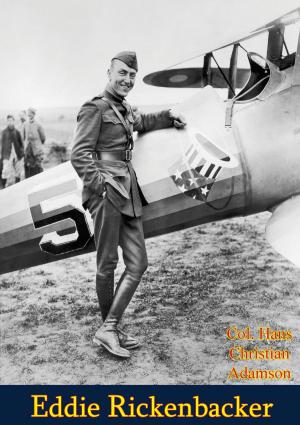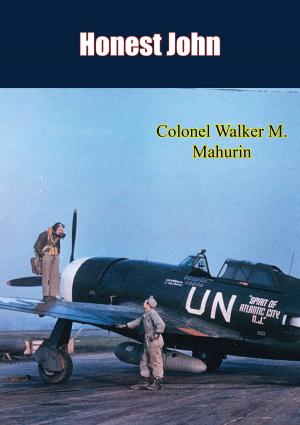Conquering The Night — Army Air Forces Night Fighters At War [Illustrated Edition]
Nonfiction, History, Germany, European General, Military, United States| Author: | Stephen L. McFarland | ISBN: | 9781786252371 |
| Publisher: | Tannenberg Publishing | Publication: | November 6, 2015 |
| Imprint: | Tannenberg Publishing | Language: | English |
| Author: | Stephen L. McFarland |
| ISBN: | 9781786252371 |
| Publisher: | Tannenberg Publishing |
| Publication: | November 6, 2015 |
| Imprint: | Tannenberg Publishing |
| Language: | English |
Includes 16 photos illustrations
The author traces the AAF’s development of aerial night fighting, including technology, training, and tactical operations in the North African, European, Pacific, and Asian theaters of war. In this effort the United States never wanted for recruits in what was, from start to finish, an all-volunteer night fighting force.
For combatants, a constant in warfare through the ages has been the sanctuary of night, a refuge from the terror of the day’s armed struggle. On the other hand, darkness has offered protection for operations made too dangerous by daylight. Combat has also extended into the twilight as day has seemed to provide too little time for the destruction demanded in modern mass warfare.
In World War II the United States Army Air Forces (AAF) flew night-time missions to counter enemy activities under cover of darkness. Allied air forces had established air superiority over the battlefield and behind their own lines, and so Axis air forces had to exploit the night’s protection for their attacks on Allied installations. AAF night fighters sought to deny the enemy use of the night for these attacks. Also, by 1944 Allied daylight air superiority made Axis forces maneuver and resupply at night, by air, land, and sea. U.S. night fighters sought to disrupt these activities as an extension of daylight interdiction and harassment efforts. The AAF would seek to deny the enemy the night, while capitalizing on the night in support of daylight operations.
Includes 16 photos illustrations
The author traces the AAF’s development of aerial night fighting, including technology, training, and tactical operations in the North African, European, Pacific, and Asian theaters of war. In this effort the United States never wanted for recruits in what was, from start to finish, an all-volunteer night fighting force.
For combatants, a constant in warfare through the ages has been the sanctuary of night, a refuge from the terror of the day’s armed struggle. On the other hand, darkness has offered protection for operations made too dangerous by daylight. Combat has also extended into the twilight as day has seemed to provide too little time for the destruction demanded in modern mass warfare.
In World War II the United States Army Air Forces (AAF) flew night-time missions to counter enemy activities under cover of darkness. Allied air forces had established air superiority over the battlefield and behind their own lines, and so Axis air forces had to exploit the night’s protection for their attacks on Allied installations. AAF night fighters sought to deny the enemy use of the night for these attacks. Also, by 1944 Allied daylight air superiority made Axis forces maneuver and resupply at night, by air, land, and sea. U.S. night fighters sought to disrupt these activities as an extension of daylight interdiction and harassment efforts. The AAF would seek to deny the enemy the night, while capitalizing on the night in support of daylight operations.
![Cover of the book Conquering The Night — Army Air Forces Night Fighters At War [Illustrated Edition] by Stephen L. McFarland, Tannenberg Publishing](https://www.kuoky.com/images/2015/november/500x500/9781786252371-lfdB_500x.jpg)

![Cover of the book Hitting Home - The Air Offensive Against Japan [Illustrated Edition] by Stephen L. McFarland](https://www.kuoky.com/images/2015/november/300x300/9781786252432-Mh6l_300x.jpg)
![Cover of the book Like A Thunderbolt: The Lafayette Escadrille And The Advent Of American Pursuit In World War I [Illustrated Edition] by Stephen L. McFarland](https://www.kuoky.com/images/2015/november/300x300/9781786252470-JBzr_300x.jpg)






![Cover of the book Block By Block: The Challenges Of Urban Operations [Illustrated Edition] by Stephen L. McFarland](https://www.kuoky.com/images/2014/august/300x300/9781782897781-zM5J_300x.jpg)


![Cover of the book Letters On Strategy Vol. I [Illustrated Edition] by Stephen L. McFarland](https://www.kuoky.com/images/2015/november/300x300/9781786253682-u1uC_300x.jpg)

